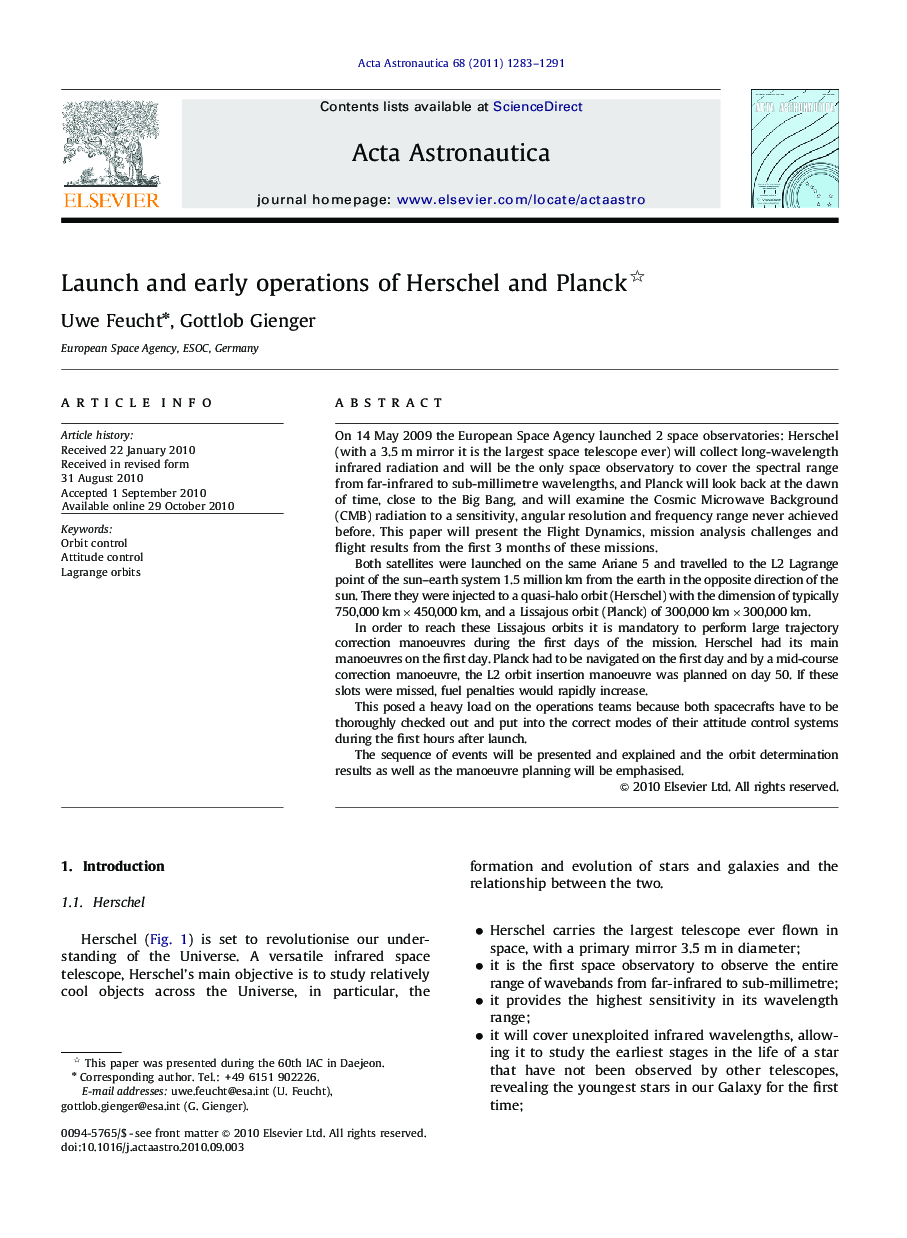| Article ID | Journal | Published Year | Pages | File Type |
|---|---|---|---|---|
| 1715945 | Acta Astronautica | 2011 | 9 Pages |
On 14 May 2009 the European Space Agency launched 2 space observatories: Herschel (with a 3.5 m mirror it is the largest space telescope ever) will collect long-wavelength infrared radiation and will be the only space observatory to cover the spectral range from far-infrared to sub-millimetre wavelengths, and Planck will look back at the dawn of time, close to the Big Bang, and will examine the Cosmic Microwave Background (CMB) radiation to a sensitivity, angular resolution and frequency range never achieved before. This paper will present the Flight Dynamics, mission analysis challenges and flight results from the first 3 months of these missions.Both satellites were launched on the same Ariane 5 and travelled to the L2 Lagrange point of the sun–earth system 1.5 million km from the earth in the opposite direction of the sun. There they were injected to a quasi-halo orbit (Herschel) with the dimension of typically 750,000 km×450,000 km, and a Lissajous orbit (Planck) of 300,000 km×300,000 km.In order to reach these Lissajous orbits it is mandatory to perform large trajectory correction manoeuvres during the first days of the mission. Herschel had its main manoeuvres on the first day. Planck had to be navigated on the first day and by a mid-course correction manoeuvre, the L2 orbit insertion manoeuvre was planned on day 50. If these slots were missed, fuel penalties would rapidly increase.This posed a heavy load on the operations teams because both spacecrafts have to be thoroughly checked out and put into the correct modes of their attitude control systems during the first hours after launch.The sequence of events will be presented and explained and the orbit determination results as well as the manoeuvre planning will be emphasised.
